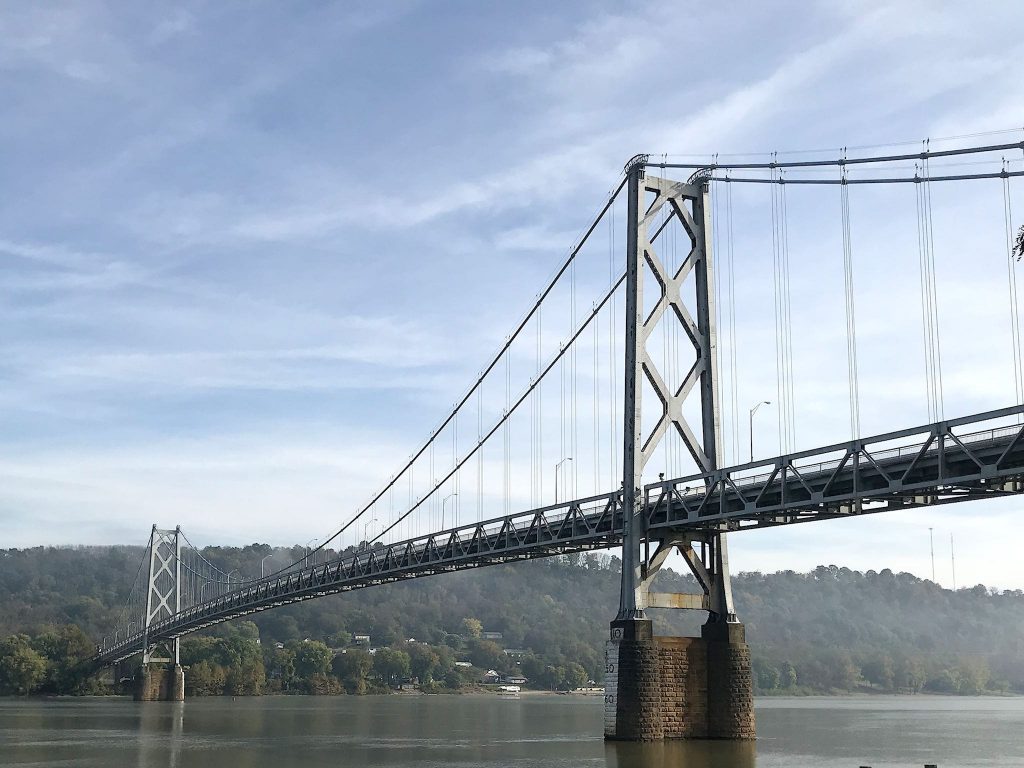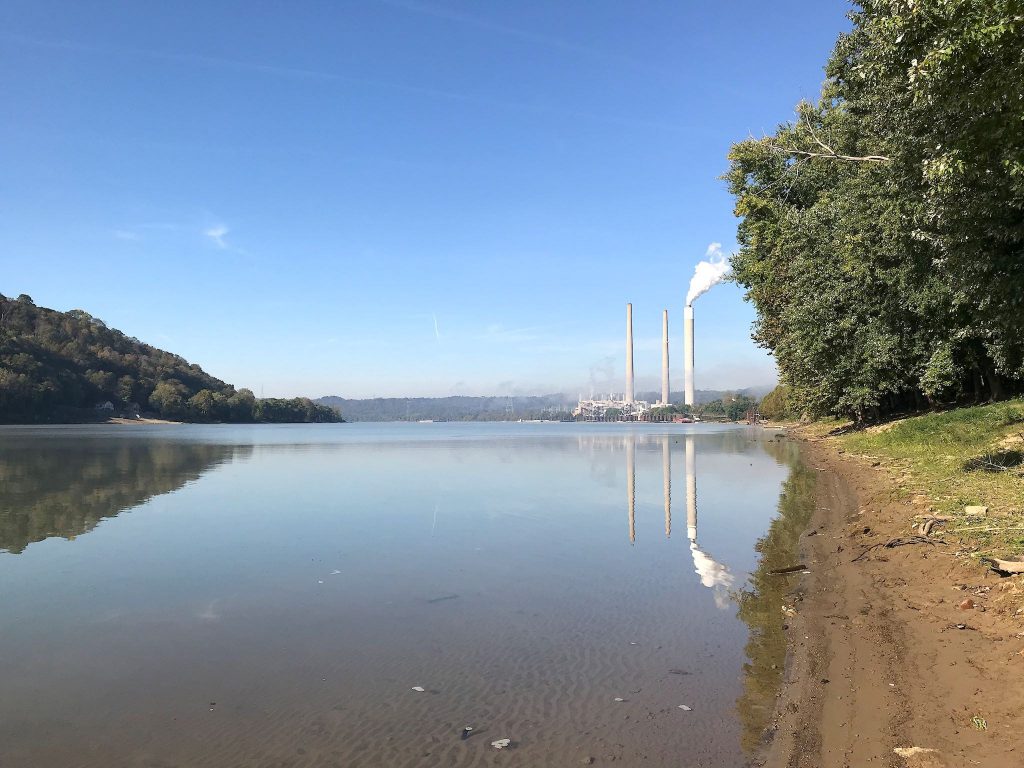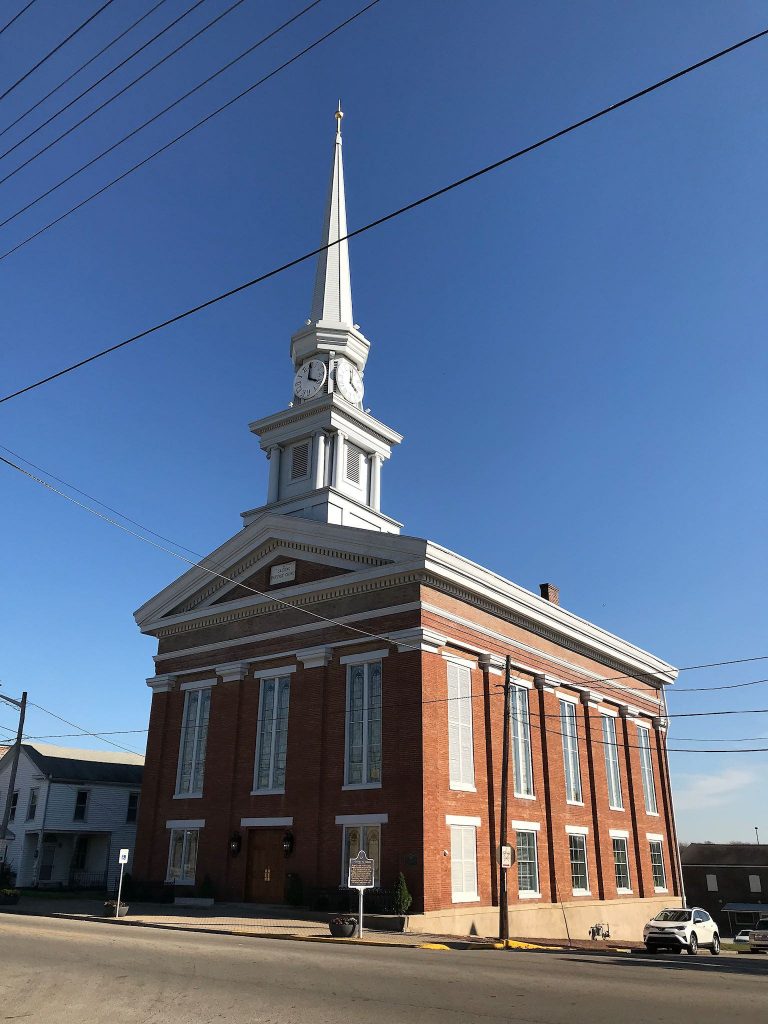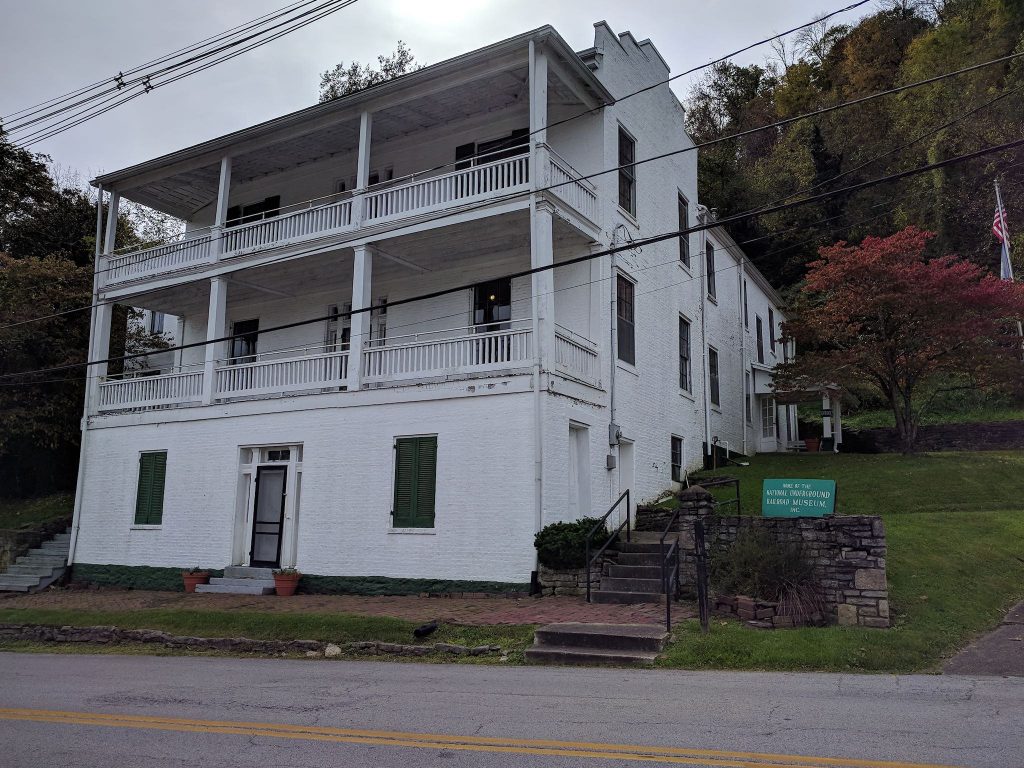
If you’re looking for my usual warped, humorous and light-hearted travelog posts, don’t read this one. Stop at part 1. I’m going to take a short break from that…
We expected to see barges, bridges, river towns and manufacturing plants in the historic Ohio River Valley, and that we did. However, there were also a few surprises… Travel (especially nomadic style) has a way of shaking up the usual everyday stuff to create learning opportunities, provide different perspectives, and stimulate deeper thinking to all who heed the call.

First: Yes, we were expecting manufacturing and power plants along the river. Wow, there are a lot of them! In researching these smokestacks, I was surprised to learn that many people view smokestacks as a symbol of prosperity. (There are photo clubs centered around smokestack pix!)
I also learned that the Ohio River remains the most polluted river in the US. I’ve included the smokestack photo in this blog with very mixed feelings. (I did not join a club.) The smokestacks of the coal-fired paper mill in my hometown were long a source of pride for our community, as well. They were also a source of incredible pollution. Of course we need stuff, and manufacturing stuff provides jobs, and we need to protect the environment so we can breathe without creating health issues and we need to find a balance. So why are we still fighting instead of working together on sustainable solutions in the 21st century?

Second: The Ohio River was the dividing line between states where slavery was legal and where it was not before the civil war. And although slavery was legal in Kentucky, Kentucky was never a Confederate or Union state. Essentially, slaves in Kentucky could ‘see’ freedom across the river in Indiana and Ohio, (although with bounty hunting being legal in those states, true freedom didn’t truly exist until one crossed the border into Canada). Until emancipation, people, both black and white and on both sides of the river, created the informal networks that became known as the Underground Railroad, helping slaves make their way to freedom.
There were several Underground Railroad museums in the small towns along the river. We found particularly interesting the exhibit at the Carnegie Center in New Albany, Indiana which highlighted the then-silent heroes (penalties for helping fugitive slaves were high), working through the second Presbyterian church. The church served as a communication center, a hiding place, and its steeple as a beacon from points far south of the river.

We also had a fascinating visit at the National Underground Railroad Museum in Maysville, Kentucky. Yes, Kentucky, a slave state, had its share of abolitionists. The Bierbower House, a former safe house and family home now converted to a museum, features stories and artifacts from slaves and their guides to freedom. The high point of the visit was the time spent with our tour guide, Crystal, a journalist and unofficial historian of the era who shared story after story about the slavery culture, perspectives from north and south of the Ohio River, and civil rights issues. We encourage everyone to visit and support these small museums, educate themselves about the atrocities of this part of US history, and continue to monitor and question our country’s commitment to civil rights. Why are so many of these issues still with us in the 21st century?
Thanks for allowing me to raise awareness on these issues.

Excellent blog. Part of what we love about our travels is the learning and thinking that is stimulated. You might want to read a book we are listening to called Strangers in their own Land. It is non-fiction by a sociology researcher seeking to understand why some people vote against their own interests. She interviews several folks who live in horribly polluted places and have had their lives devastated by it, but still rail against government regulation of the very corporations and activities that destroyed their land. Their perspectives are interesting.
Thanks Linda! Agree 100%.
And thanks for the book recommendation. We’re always looking for reads that stimulate thought, particularly about the social shift that going on right now. A recent fave of ours is Hillbilly Elegy. Have you read it?
Hi Sue,
I’m named Sue, too. I’m a graphic artist seeking a photo that illustrates how mercury ends up in game fish via atmospheric deposition from powerplant smokestack emissions. Your photo of the smokestacks at Madison, IN., would be perfect. Would you let me use it in my project? It will be featured on the cover of the Journal “Environmental Science & Technology.”
Do you sell your photos?
Hi Sue, I will email you about this. Thanks!